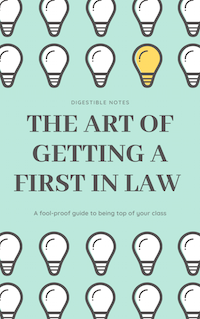Criminal Recklessness
Introduction to Recklessness
⇒ In general terms, being reckless refers to the taking of an unjustified risk.
⇒ There has been difficulty in determining what recklessness meant → at one stage there were two definitions of recklessness, known as Cunningham recklessness and Caldwell recklessness. However, the House of Lords has abolished Caldwell recklessness and so there is now only one kind of recklessness used.
Cunningham recklessness
⇒ There are two elements that need to be shown for Cunningham recklessness:
⇒ In other words, Cunningham recklessness (or subjective recklessness, as it is sometimes known), will arise if the accused consciously takes an unjustified risk.
⇒ The first element only requires that the accused foresaw that there was a risk; it does not have to be foreseen as highly likely to occur. Furthermore, the question is whether the accused foresaw the risk, not whether the risk was obvious or would have been foreseen by a reasonable person (see, for example, R v Stephenson).
⇒ The second element is fairly straightforward as it is unlikely for there to exist a situation where it would be reasonable for the defendant to take a risk that a person will be injured.
The Art of Getting a First in Law - ONLY £4.99
FOOL-PROOF methods of obtaining top grades
SECRETS your professors won't tell you and your peers don't know
INSIDER TIPS and tricks so you can spend less time studying and land the perfect job
We work really hard to provide you with incredible law notes for free...
The proceeds of this eBook helps us to run the site and keep the service FREE!

Caldwell recklessness
⇒ NOTE: Caldwell recklessness is now abolished. However, it should be discussed for academic purposes...
⇒ The case of Caldwell changed the definition of recklessness: whereas in Cunningham recklessness was proved subjectively, in Caldwell recklessness was proved objectively.
⇒ In other words, in Caldwell recklessness, if there was an obvious risk of harm resulting from the defendant’s actions, regardless of whether the defendant had foreseen the harm, he/she would be acting recklessly. Thus, Caldwell recklessness differed from Cunningham recklessness because it included defendants who were not aware of an obvious risk.
⇒ Caldwell recklessness fell into disrepute because it punished defendants for failing to notice a risk which would have been obvious to a reasonable person. See, for example, Elliott v C.
R v G and R [2006] UKHL 50
⇒ Until this case, subjective (Cunningham) and objective (Caldwell) recklessness operated side by side. The House of Lords decided, in this case, that Caldwell recklessness had to go. See the case facts, R v G and R.
⇒ In Attorney-General’s Reference (No 3 of 2003) the Court of Appeal confirmed R v G and R and abolished Caldwell recklessness not just for criminal damage, but for all crimes which had used Caldwell recklessness. Thus, R v G and R now applies to all cases of criminal damage and Cunningham applies to all other offences involving recklessness.
Law Application Masterclass - ONLY £9.99
Learn how to effortlessly land vacation schemes, training contracts, and pupillages by making your law applications awesome. This eBook is constructed by lawyers and recruiters from the world's leading law firms and barristers' chambers.
✅ 60+ page eBook
✅ Research Methods, Success Secrets, Tips, Tricks, and more!
✅ Help keep Digestible Notes FREE

